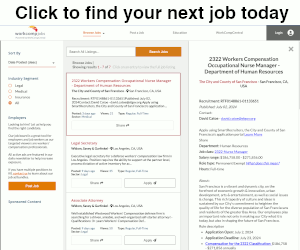Industry Insights
May 15, 2024
Snyder: The Perfect Offer
- State: California
- - 0 shares
You know the case should settle. Why won’t the other side agree to your offer?

Teddy Snyder
Here are some tips for creating the perfect offer. I’m going to refer to both offers and demands as offers to settle in this article.
When
As long as you’ve done your homework, there’s no bad time to make an offer. Professionals on both sides of the table have been evaluating the case since it started. The attorney for the plaintiff/claimant made a judgment call about whether to accept the case. The defense set up reserves based on early information. The unique facts of the case will determine how much investigation is needed to put an offer on the table.
No one wants to bid too high or too low. Evaluation is an ongoing process. The mark of an expert litigator is knowing when to stop investigating.
You don’t need to look under every rock. For example, if you have the experts’ reports, depositions may be an unnecessary expense.
You don’t need to wait for a demand. Making an offer without a demand shows you are serious about settlement. This also creates an anchor, i.e., you are defining your evaluation range. The offer should be realistic but at your outer limit. Putting an offer on the table may prompt your negotiating opponent to take a second — or first — look.
Don’t ignore an offer to settle. Nor should your kneejerk reaction be immediate rejection. Ask questions about how this number was calculated. Have you missed something? Have they? Don’t drop the negotiation ball. Look at the offer as an opening to constructive communication. A mediator can facilitate this process.
Who
Early on, the adjuster may be best positioned to make an offer. Once an attorney is on board, the attorney speaks for the adjuster. But even later in the proceedings, the adjuster may be the best person to make the offer. This can happen when an attorney senses her opposite number harbors a personal animosity. Similarly, some claimants refuse to negotiate directly with their adjuster, particularly if there is a long, contentious history.
When adjusters attend mediation, they often take an active role in the negotiation. In rare situations, particularly in commercial cases, the parties can negotiate with each other directly. Direct negotiation like this may work best under the watchful eye of the mediator, but away from the attorneys.
What
The perfect offer will reflect the evaluation effort that went into creating it. Just as in grade school math, show your work. Avoid round numbers — at least initially. In most cases, the evaluator is considering actual down-to-the-penny bills. The offer should show how they were taken into account, even if a round number ultimately settles the case.
As you close in on a deal, be sure to cover all the deal points. Remember everything you know about the restatement of contracts. There needs to be an ironclad offer and acceptance to finalize the agreement and foreclose later attacks. Make sure the deal you struck can be enforced in court if something goes awry.
How
Negotiations are often oral. If you encounter difficulties getting your opponent’s attention or you suspect opposing counsel is not conveying your offers to the client, a written offer is best.
Confirm oral offers in writing. The strongest offers are more than an amount. Include a date by which payment will be made. Does the deal include any other consideration? Once you think you have an agreement in principle, confirm particulars such as how liens, costs and fees will be handled. Identify exactly all the parties doing the releasing and all the parties/entities being released. What is the nature of the release? With prejudice, without prejudice, stipulation?
Perfection
Your first offer is unlikely to be the perfect formulation of combined factors that everyone can agree on. Keep making offers of settlement as the matter progresses and keep an eye on the midpoint between offers and demands. Close when the zone of difference becomes negligible.
Voilá: perfection.
Attorney Teddy Snyder mediates workers' compensation cases throughout California. She can be contacted through snydermediations.com.
Advertisements
Columns
- Montgomery: DWC Identifies 'Poor' Work Comp Carriers 10/28/24
- Kamin: LC 3600(a)(8) Bars Trucker's Claim 10/23/24
- Young: What Did We Learn From This Legislative Session? 10/17/24
- Burns: Subpoenaing Out-of-State Records 10/16/24
- Montgomery: More 2,500 MPNs Vanish — Again 10/15/24
- Snyder: Five Ethical Guideposts for Negotiation Success 10/11/24
- CAAA: Newsom Misses Chance to Protect Farmworkers 10/09/24
- Moore: AI Worries Actuaries, Underwriters 10/07/24
- Wagner: A Doctor's View on Malingering 10/02/24
- Moore: Headache Avoidance for Adjusters 09/30/24
- Montgomery: An Unfortunate Veto 09/27/24
- Stith: Prescription Drug Management Survey Results Are In 09/25/24
- Fowler: What to Include in Compromise and Release 09/24/24
- Duff: Reverberations of Magna Carta 09/19/24
- Montgomery: No, Doctors Aren't the Culprits 09/17/24
- Stevens: Resolving Disputes Over Sending Deposition to PQME 09/16/24
- Moore: Claim Contact Deadline Still 24 Hours 09/13/24
- Snyder: Ain't No Fairy Godmother Coming to Help You 09/11/24
- Fish: Employer Responsible for Injury Aggravation 9 Years After Settlement 09/09/24
- Barthel: Preparing for Doctor Deposition 09/04/24
Now Trending
- Workers' Compensation News
-
Calif. DWC
Announces TTD Rates for…
Posted on Oct 24, 2024
-
Calif. 2nd DCA
Publishes Decision on Admissibility
of Expert Testimony in FELA…
Posted on Oct 25, 2024
-
N.Y. Report: WCB
Says Patriots Owe $24,000 for Not
Having…
Posted on Oct 28, 2024
-
Calif. DWC
Completes Server…
Posted on Oct 28, 2024
-
Calif. CWCI: Drop
in Opioid Prescriptions More
Pronounced in…
Posted on Oct 24, 2024
-
N.Y. Carrier
Liable for Worker's Claim After
Coverage…
Posted on Oct 28, 2024
-
La. Supreme Court
Says Injured Worker Using False
Identity Can't Pursue 3rd Party…
Posted on Oct 29, 2024
-
N.Y. Worker Gets
Benefits for Ladder Fall Injuries
Despite…
Posted on Oct 25, 2024
-
Pa. Court Upholds
Denial of Employer's Petition to
Convert Worker's TTD Status to…
Posted on Oct 25, 2024
-
N.Y. Driver's
Widow Gets Award for His Death from…
Posted on Oct 29, 2024
Jobs
- Workers' Compensation Claims Adjuster, Senior – Remote – California (and New York)
- Attorney: Workers' Compensation Defense
- Workers’ Compensation Defense Attorney
- Attorney
- Legal Assistant-Workers' Compensation
- Independent/Part-Time Workers’ Compensation Attorney - WCAB Appearances and Virtual Depositions
- Workers’ Compensation Legal Assistant Workers' Compensation Jobs
Upcoming Events
Nov 18-19, 2024
Business Insurance Women To Wa
The Business Insurance Women to Watch Awards is the only recognition program that celebrates leadi …
Feb 5-7, 2025
Business Insurance 2025 WORLD
February 5, 2025 – February 7, 2025. The Business Insurance World Captive Forum, established in 1 …
Mar 6-7, 2025
DWC Opens Registration for 32n
The California Division of Workers’ Compensation (DWC) is pleased to announce that registration fo …
Social Media Links
c/o Business Insurance Holdings, Inc.
Greenwich, CT 06836




No Comments
Log in to post a comment